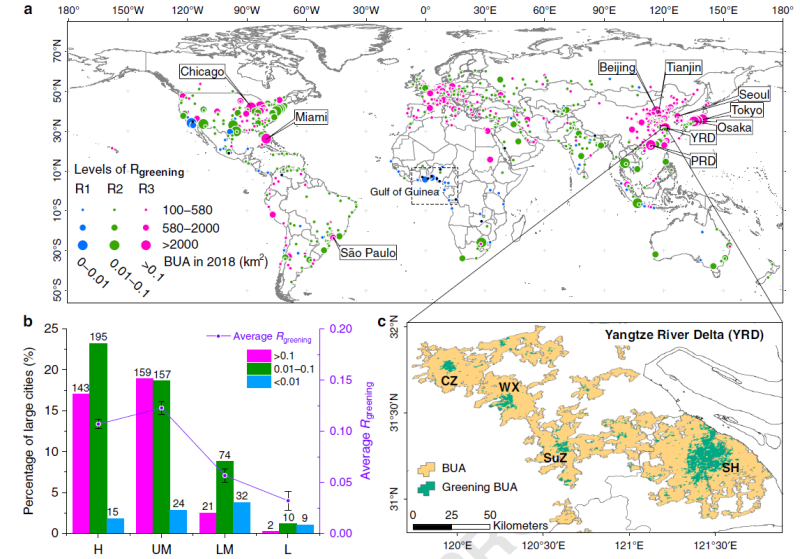
According to the latest report from the United Nations (UN), the global population will reach 9.7 billion, and 68% of the population will live in urban areas in 2050. Undoubtedly, urban sustainable development is highly related to the future of humanity.
At present, urban sustainable development is an increasing concern worldwide, and it has been enshrined in the 2030 Agenda for the UN's Sustainable Development Goals. To achieve the goals, it is essential to track the urbanization progress of cities at different development stages in as detailed a way as possible. However, a global perspective that clarifies the urbanization characteristics of large cities around the world is still lacking.
A joint study, published in Nature Communications on Oct. 23, addressed the questions of how global large cities have developed in recent decades in terms of urban expansion, population growth, and urban greenness change, and what the relationships between the urbanization features and the economic levels are.
The study was conducted by Dr. SUN Liqun and LI Qinglan from Shenzhen Institutes of Advanced Technology (SIAT) of the Chinese Academy of Sciences, Prof. CHEN Ji from the University of Hong Kong, and Dr. HUANG Dian from National Supercomputing Center in Shenzhen.
The researchers analyzed 841 large cities with built-up areas (BUAs) over 100 km2 from 2001 to 2018, and found an uneven distribution of urbanization at different economic levels. On average, large cities in the low-income and lower-middle-income countries had the highest urban population growth, and BUA expansion in the upper-middle-income countries was more than three times that of the high-income countries.
From 2001 to 2018, the urban expansion of China was the largest, accounting for 47.5% of the total urban expansion in the world. Globally, more than 10% of BUAs in 325 large cities showed significant greening (P<0.05) from 2001 to 2018. In particular, China accounted for 32% of greening BUAs with only 19% of the total BUA in the 841 large cities, where about 108 million people lived.
Scientists believe that understanding the dramatic uneven urbanization of the past several decades could provide a scientific reference to improve urban governance, thereby achieving a virtuous circle among urban expansion, population growth, and urban greening changes. Therefore, it is crucial to achieving sustainable urban development.

Distribution of large cities with greening BUA (Image by SIAT)

86-10-68597521 (day)
86-10-68597289 (night)

86-10-68511095 (day)
86-10-68512458 (night)

cas_en@cas.cn

52 Sanlihe Rd., Xicheng District,
Beijing, China (100864)

